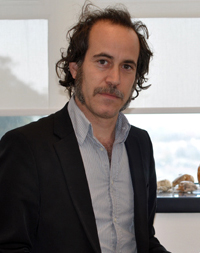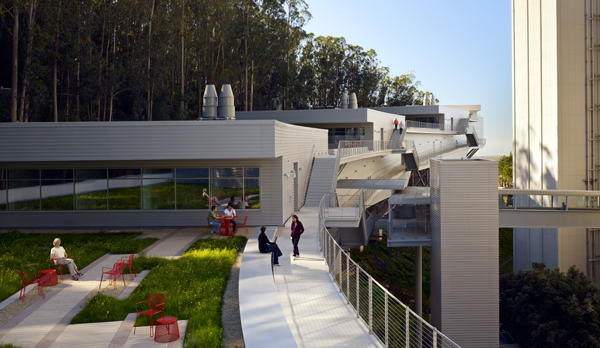UCSF Training Program Attracts Best Minds in Developmental, Stem Cell Biology
Fittingly enough for a University where embryonic stem cells were first discovered in mice and named, UCSF has launched a pioneering program in Developmental and Stem Cell Biology (DSCB). The program, one of the first of its kind in the nation, joins many of UCSF’s top researchers and unites the Mission Bay and Parnassus campuses in an ambitious effort to speed innovation in the burgeoning stem cell realm.

Rich Schneider, PhD
“This program brings together all the different scientists and resources we have at UCSF that are dedicated to these fields,” said Rich Schneider, PhD, who co-directs the program along with Didier Stainier, PhD. “Our faculty and students are interested in understanding how embryos develop and how cells make tissues and organs, and we want to use that information in the context of regenerative medicine and designing novel therapies to cure diseases and treat injuries.”
More than 60 faculty from various clinical and basic science departments and with diverse interests participate in the program. Most DSCB faculty have ongoing laboratory projects that span multiple thematic areas. Schneider, an associate professor in the Department of Orthopaedic Surgery, leads the effort on the Parnassus campus. Stainier, a professor of Biochemistry and Biophysics, leads the Mission Bay campus.
“This is an opportunity for UCSF to showcase the wide range of scientists working in developmental biology and stem cells, and to attract the best and brightest students,” Schneider said.
One of the premier programs for doctoral studies in the United States, the DSCB Program builds upon the outstanding strengths of basic and translational research at UCSF, and provides training in four overlapping and interrelated thematic areas:
- Stem Cells and Cell Differentiation
- Organogenesis and Tissue Regeneration
- Pattern Formation and Morphogenesis
- Evolutionary Developmental Biology
UCSF established the program in 2010, around the same time that Harvard University started a PhD program in stem cell research. Stanford University started one this year.
Views of the Future
In addition to its classic view of western San Francisco, Schneider’s office now peers directly at the sleek new Ray and Dagmar Dolby Regeneration Medicine Building. The $123 million building, clinging to the hillside, opened this year and houses 25 state-of-the-art stem cell laboratories in the Eli and Edythe Broad Center of Regeneration Medicine and Stem Cell Research at UCSF.

The cantilevered Ray and Dagmar Dolby Regeneration Medicine Building climbs up a steep slope at UCSF's Parnassus campus .
The commitment to stem cell research shown by that building, and the new DSCB program, is attracting top students from across the country.
“I was really drawn to UCSF because of its reputation for great research and world-class facilities,” said Kate Woronowicz, who started at UCSF in September. The launch of the DSCB program sealed the deal: “I liked the idea that I could get mentoring that was a little more directed” in her area of interest, she said. “When I was applying, not every school even had developmental biology as a program they were interested in.”
Matt Donne graduated from Wesleyan University in Connecticut in 2007, and pondered careers either as a doctor or in research. After the past four years in the lab of Susan Fisher, PhD, at UCSF, he has entered the DSCB program and staked his claim in basic science. “As a doctor, I could do a lot of great things to help people,” he said, “but working with Susan made me realize that if I get lucky, I could use embryonic stem cells, or pluripotent or adult stem cells, and I could come up with something many doctors could use.”
Donne is interested in general heart defects, and will ultimately work in the labs of prominent scientists Deepak Srivastava, MD, PhD, and Benoit Bruneau, PhD. “It’s pretty amazing I’ll be able to do my thesis with them,” he said. “Other programs are too broad. This is very specific. This program focuses on understanding the molecular and genetic pathways involved, and how this information is applied to the actual stem cells.”
Read more on the UCSF School of Medicine website.
Photo of Rich Schneider by Sarah Paris
Photo of building is Copyright Bruce Damonte/Courtesy of Rafael Viñoly Architects